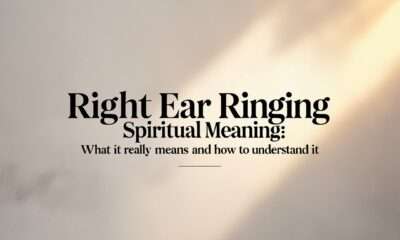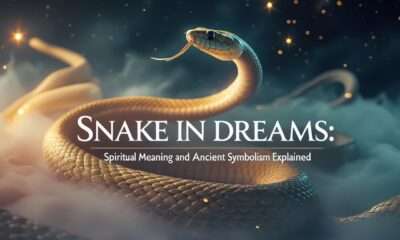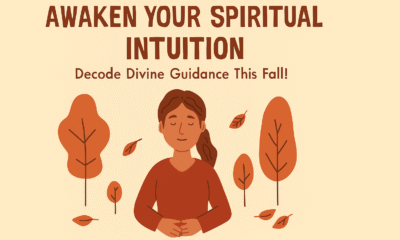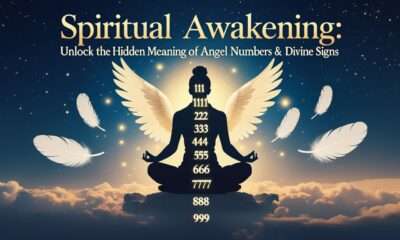Spirituality
Why is My Cat Crying at Night? What Could It Mean?
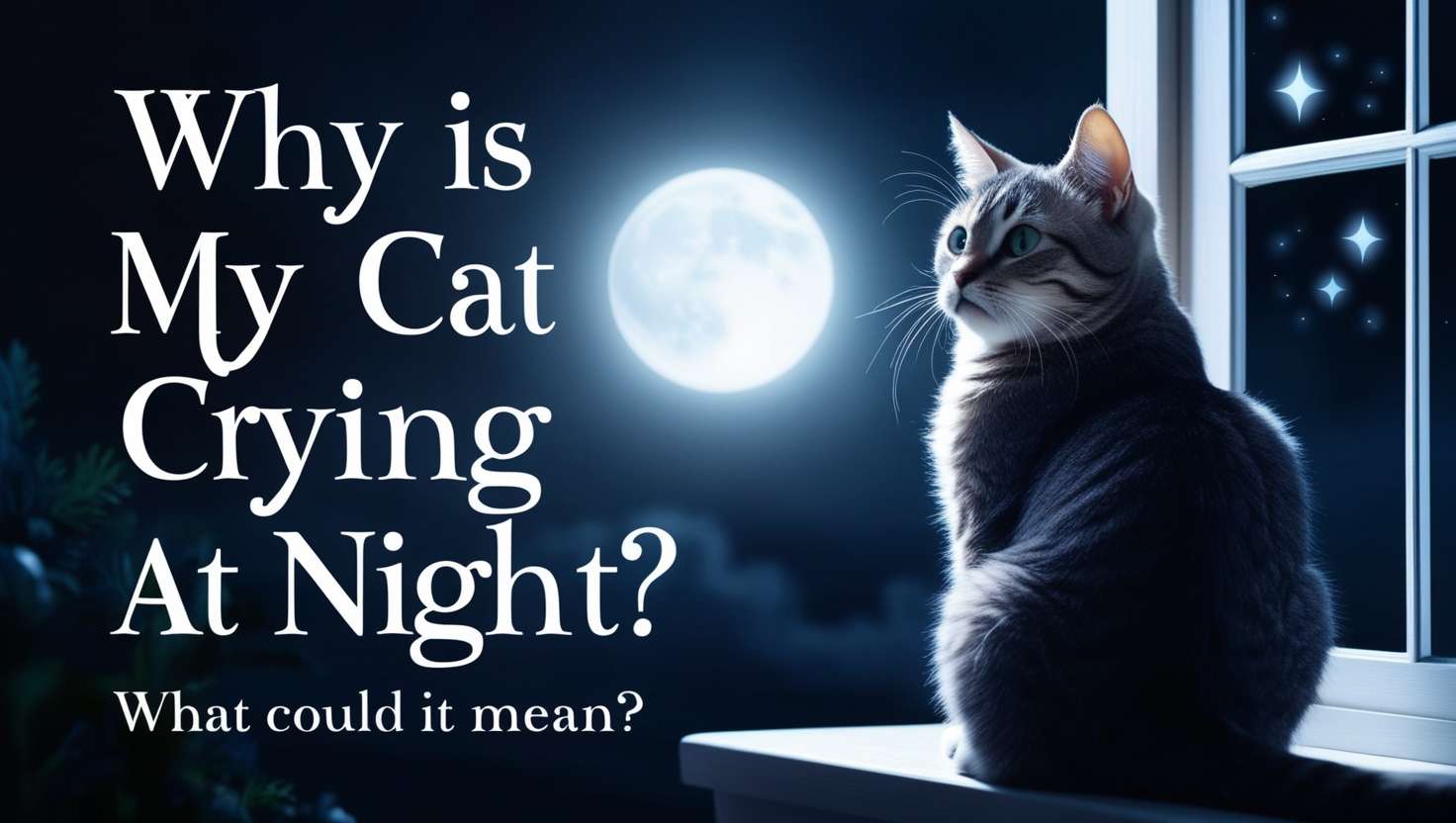
Have you ever been woken up in the middle of the night by the sound of your cat crying? It can be a concerning and unsettling experience. But before you rush to the conclusion that your cat is simply being a nuisance, it’s important to understand that their cries could be a way of communicating with you. In this article, we will explore the reasons why your cat crying at night and what it could potentially mean.
Table of Contents
Why my cat crying at night? Is my cat in pain?
One of the first things to consider when your cat is crying at night is whether they could be in pain. Cats are masters at hiding their discomfort, so if they are vocalizing their pain, it could be a sign that something is seriously wrong. It’s important to observe your cat’s behavior closely and look for any other signs of distress, such as changes in appetite, grooming habits, or litter box usage. If you suspect that your cat is in pain, it’s best to consult with your veterinarian as soon as possible.
On a spiritual level, crying could also signify emotional or spiritual pain. Cats are highly intuitive animals and can often pick up on the energies around them. If your cat is crying at night, it could be a reflection of the stress or negative energy in your household. Take some time to evaluate your own emotions and the atmosphere in your home, as it could be impacting your cat’s behavior.
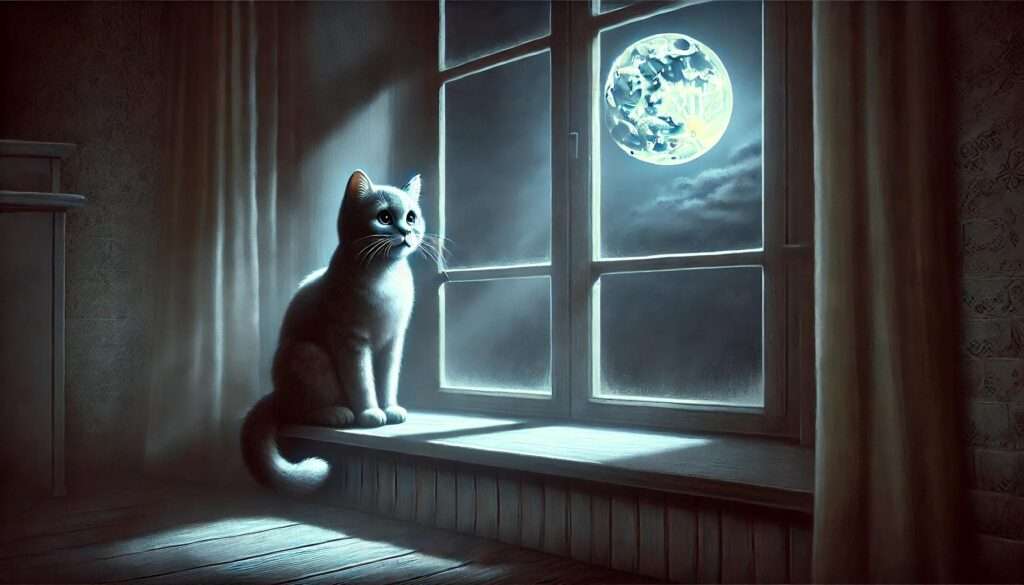
Is my cat lonely or anxious?
Cats are independent creatures, but they still crave companionship and security. If your cat is crying at night, it could be a sign that they are feeling lonely or anxious. Cats are creatures of routine and can become distressed when their environment is not stable. This could manifest in vocalizations at night as they seek comfort and reassurance from you.
On a spiritual level, crying could also indicate a sense of separation from their spiritual source. Cats are known for their connection to intuition and the unseen world. If your cat is crying at night, it could be a sign that they are feeling disconnected from their spiritual guides or are in need of spiritual protection. Consider creating a peaceful and harmonious environment for your cat to help them feel more secure.
Is my cat hungry or thirsty?
Cats are creatures of habit when it comes to their feeding and drinking schedules. If your cat is crying at night, it could be a sign that they are hungry or thirsty. Make sure to provide your cat with fresh water and food before bedtime to prevent any late-night hunger pangs. Additionally, consider incorporating interactive feeding toys or puzzle feeders to stimulate your cat’s mind and satisfy their natural hunting instincts.
On a spiritual level, crying could also symbolize a need for nourishment of the soul. Cats are deeply spiritual creatures and require more than just physical sustenance. Ensure that your cat has access to stimulating toys, cozy resting spots, and plenty of affection to nourish their spiritual well-being.

Is my cat trying to communicate with me?
Cats are incredibly communicative animals and use various vocalizations to express their needs and desires. If your cat is crying at night, it could be their way of communicating with you. Whether they are seeking attention, expressing boredom, or alerting you to something in their environment, it’s important to listen to what your cat is trying to convey.
On a spiritual level, crying could also be a form of telepathic communication. Cats are known for their psychic abilities and can tune into their human’s thoughts and emotions. If your cat is crying at night, it could be their way of picking up on your subconscious worries or fears. Take this as an opportunity to connect with your cat on a deeper level and strengthen your spiritual bond.
Is my cat in heat?
If your cat is a female who has not been spayed, her crying at night could be a sign that she is in heat. Female cats in heat can be incredibly vocal as they seek a mate. This behavior is typically accompanied by other signs such as restlessness, excessive grooming, and rolling on the floor. If you suspect that your female cat is in heat, it’s best to consult with your veterinarian about the best course of action.
On a spiritual level, crying could also symbolize a yearning for connection and union. Cats are deeply connected to the cycles of nature and can be influenced by the energies of the moon and stars. If your female cat is crying at night, it could be a reflection of her desire for cosmic harmony and balance. Consider creating a serene and tranquil environment for your cat to help ease her discomfort.

Is my cat bored or restless?
Cats are highly intelligent and active creatures who require mental and physical stimulation to thrive. If your cat is crying at night, it could be a sign that they are bored or restless. Cats who are cooped up indoors all day may become frustrated and anxious, leading to nighttime vocalizations. Make sure to provide your cat with plenty of interactive toys, scratching posts, and opportunities for play to keep them mentally and physically engaged.
On a spiritual level, crying could also signify a craving for adventure and exploration. Cats are curious by nature and have a deep connection to the natural world. If your cat is crying at night, it could be their way of expressing a desire for new experiences and discoveries. Consider enriching your cat’s environment with outdoor enclosures, cat trees, or window perches to satisfy their innate need for exploration.
Conclusion
Understanding why your cat is crying at night is essential for providing them with the care and support they need. Whether it’s due to physical discomfort, emotional distress, or spiritual yearning, your cat’s vocalizations should not be ignored. By observing your cat’s behavior, addressing their needs, and creating a harmonious environment, you can help your cat feel safe, secure, and loved.
What does a fire truck symbolize spiritually?
FAQs
1. Can I ignore my cat’s crying at night?
While it may be tempting to ignore your cat’s cries at night, it’s important to address the underlying cause of their vocalizations. Whether it’s a physical, emotional, or spiritual need, your cat’s cries should not be dismissed.
2. How can I help my cat stop crying at night?
To help your cat stop crying at night, consider making changes to their environment, providing them with mental and physical stimulation, addressing any potential health issues, and creating a calming bedtime routine.
3. Should I consult with a veterinarian about my cat’s nighttime crying?
If you suspect that your cat’s nighttime crying is due to physical discomfort or a medical issue, it’s crucial to consult with a veterinarian for a proper diagnosis and treatment plan.
4. Can spiritual practices help alleviate my cat’s nighttime crying?
Implementing spiritual practices such as meditation, energy clearing, and intention setting can help create a peaceful and harmonious environment for your cat, potentially reducing their nighttime crying.
5. Is it normal for cats to cry at night?
While occasional crying at night may be normal for some cats, persistent or excessive vocalizations could indicate an underlying issue that needs to be addressed.
Spirituality
Guided Meditation for Healing Chakras: A Real, Grounded Approach

Life moves fast. We jump from one task to another. Our minds race ahead while our bodies try to keep up. It’s easy to feel scattered. When we stay in this mode for too long, we lose connection to the deeper part of ourselves—the part that knows how to rest and reset.
This is why guided meditation for healing chakras can help.
Not because it promises miracles or instant transformation, but because it slows everything down. It gives the mind one clear thing to focus on. It helps us pay attention to places in the body we often ignore.
You don’t have to “believe in” chakras in a strict spiritual sense. Think of them as checkpoints of awareness along the body. When you focus on each area with breath and attention, you relax. Tension softens. Thoughts settle. And you feel more present.
That is the real benefit of this meditation.
Not perfection—presence.
Table of Contents
What are chakras, in simple terms?
The word chakra comes from Sanskrit and means wheel or center. In many traditions, chakras are viewed as centers of energy that run along the spine—from the base of your tailbone to the top of your head.
In everyday practice, you can treat chakras as seven main focus areas:
- Root — base of the spine
- Sacral — below the belly button
- Solar Plexus — upper belly
- Heart — center of chest
- Throat — base of throat
- Third Eye — between eyebrows
- Crown — top of head
Each chakra has a color and theme connected to it.
But don’t worry about getting everything “right.” You don’t need to be spiritual to try this. You don’t need to visualize perfectly. You only need to breathe and notice what you feel.
Guided meditation for healing chakras is about attention, not performance.

Why people feel drawn to chakra meditation
Most of us spend our days reacting.
Messages. Notifications. Expectations.
By the time we pause, we’re exhausted—not because we did too much, but because we never allowed our minds to rest.
Chakra meditation gives your mind structure. Instead of floating around and worrying, you give your attention one place to land at a time. It turns awareness into a step-by-step journey, which can be refreshing for people who struggle with open-ended meditation.
Here’s what usually happens during chakra meditation:
- Breath becomes slower.
- Muscles soften.
- Thoughts lose urgency.
- The body feels grounded again.
You’re not trying to change anything. You’re simply paying attention.
The real meaning of “healing” in chakra work
Healing does not mean fixing.
Healing means noticing.
Sometimes, when we finally sit still, we find emotions stored in the body:
- Tightness in the chest when we’re overwhelmed.
- Clenched jaw when we feel unheard.
- A heavy stomach when we feel afraid.
Guided meditation for healing chakras asks you to slow down enough to feel these things—without judgment.
Healing is gentle. It happens through awareness, not force.
Preparing for the meditation
You don’t need a sacred space or fancy objects. You just need a quiet moment.
Here’s a simple setup:
- Sit or lie down.
- Turn off your phone or put it on silent.
- Rest your hands where they naturally fall.
- Close your eyes or lower your gaze.
This meditation works best when you’re comfortable. If your back aches sitting up, lie down. If visualization feels hard, focus on your breath instead. There’s no wrong way to do this.

Guided Meditation for Healing Chakras (Full Script)
This is a long-form script you can read slowly, record, or follow along with your own pace.
Start
Take a deep breath in.
Hold for a moment.
Let the air leave your body.
Feel your body settle.
1. Root Chakra (base of spine)
Sense the weight of your body.
Feel the ground holding you.
Imagine a soft red glow at the base of the spine. The color doesn’t need to be perfect. It can be a shape, a feeling, or just breath.
Say softly in your mind:
“I am safe. I am supported.”
Breathe here.
Slow and steady.
2. Sacral Chakra (below the belly button)
Bring your awareness to the lower belly.
Let your hips relax.
Imagine a warm orange light.
Say:
“I allow my feelings. I give myself space.”
If emotions rise, let them.
If nothing happens, that’s okay too.
3. Solar Plexus Chakra (upper belly)
Move your attention to your upper abdomen.
Notice if you’re holding tension here.
Breathe into it.
Picture a gentle yellow glow.
Say:
“I act from calm, not fear.”
With every exhale, release control.
4. Heart Chakra (center of the chest)
Focus on your chest.
Notice your ribs moving with breath.
Picture soft green light spreading outward.
Say:
“I give and receive with ease.”
If your chest feels tight, breathe gently.
You don’t have to force openness.
5. Throat Chakra (base of throat)
Relax your jaw.
Unclench your tongue from the roof of your mouth.
Imagine cool blue light.
Say:
“I speak what feels true for me.”
Let your breath flow without effort.
6. Third Eye Chakra (between eyebrows)
Soften the muscles around your eyes.
Picture indigo light.
Say:
“I see clearly.”
Not with your eyes—
but with your inner knowing.
7. Crown Chakra (top of the head)
Imagine a soft violet or white light above your head.
Say:
“I trust the path unfolding.”
Even if you don’t know where you’re going yet.
Closing
Take a slow breath from the base of your spine to the top of your head.
Exhale from the head down to your feet.
Do this three times.
When you’re ready, open your eyes.
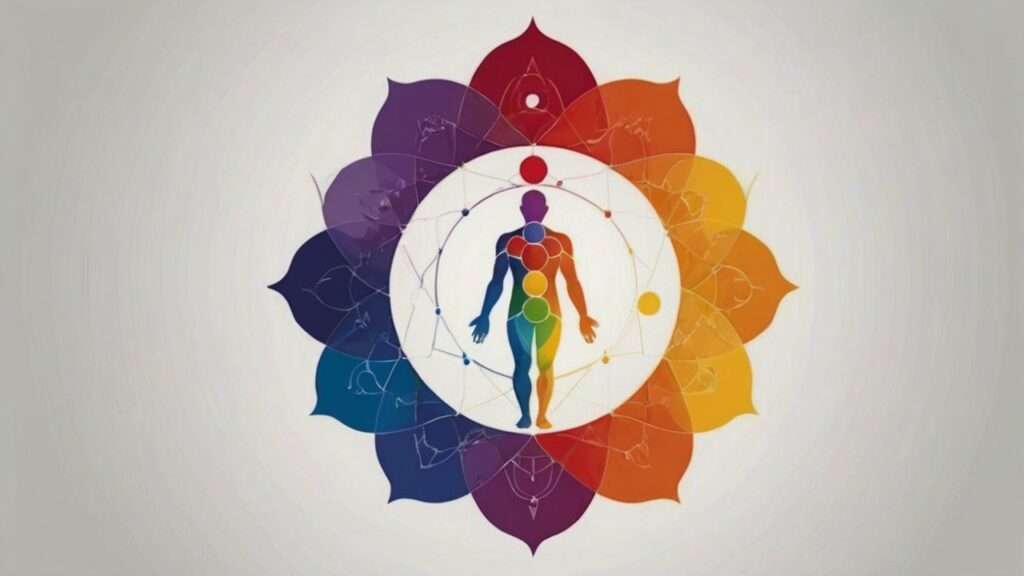
What you may feel afterward
People describe different experiences:
- Calm
- Warmth
- Tingling
- Softness in the chest
- Clarity
Or sometimes… nothing.
Feeling nothing does not mean it “didn’t work.”
Sometimes the body needs time before it responds.
What matters is that you showed up.
Guided meditation for healing chakras is not about dramatic moments. It’s about the slow, steady return to yourself.
How this practice supports emotional balance
We store emotions in the body.
We hold tension in certain areas without realizing it.
- Worry collects in the stomach.
- Grief settles in the chest.
- Truth gets stuck in the throat.
Chakra meditation brings those areas into awareness.
When you breathe into tension, the body feels safe enough to let go.
It feels simple—because it is.
Making chakra meditation part of your routine
You don’t need to meditate for an hour.
You don’t need to get every step right.
Here are realistic ways to add it to daily life:
- Three minutes before bed
- Five minutes during lunch
- A short body scan while sitting in the car (engine off)
Consistency matters more than duration.
A little every day is better than one big session you never repeat.
Start small.

What if your mind keeps wandering?
It will.
All minds wander.
When you notice yourself drifting, don’t judge.
Just bring your attention back to your breath or the chakra you’re on.
Every time you return, you are training focus.
Meditation isn’t about emptying the mind.
It’s about noticing the mind and gently returning.
That is the practice.
Troubleshooting common concerns
I can’t visualize colors.
Don’t. Focus on sensation or breath instead.
I don’t feel energy.
Feeling anything is not the goal. Awareness is.
I get emotional during the heart chakra.
That’s normal. Take your time. Pause if you need to.
A shorter version when you’re busy
You can use this any time:
- Belly (root) – “I am here.”
- Chest (heart) – “I soften.”
- Brow (third eye) – “I see.”
Nine breaths total.
This quick version still counts as guided meditation for healing chakras.
Small practices create big change over time.
Why this meditation helps with stress
When you move your attention from point to point:
- The brain receives clear direction.
- Stress signals slow down.
- The nervous system shifts from alert mode into rest mode.
You are teaching your body safety.
Safety creates openness.
Openness creates ease.
Final thoughts
You are not doing this to become a “better version” of yourself.
You are doing this to come back to the version that already exists underneath stress, noise, and expectations.
Guided meditation for healing chakras is simply a tool.
A way to meet yourself again.
Not in a dramatic moment.
Not in perfection.
But breath by breath.
Right Ear Ringing Spiritual Meaning: What It Really Means and How to Understand It
Spirituality
Right Ear Ringing Spiritual Meaning: What It Really Means and How to Understand It
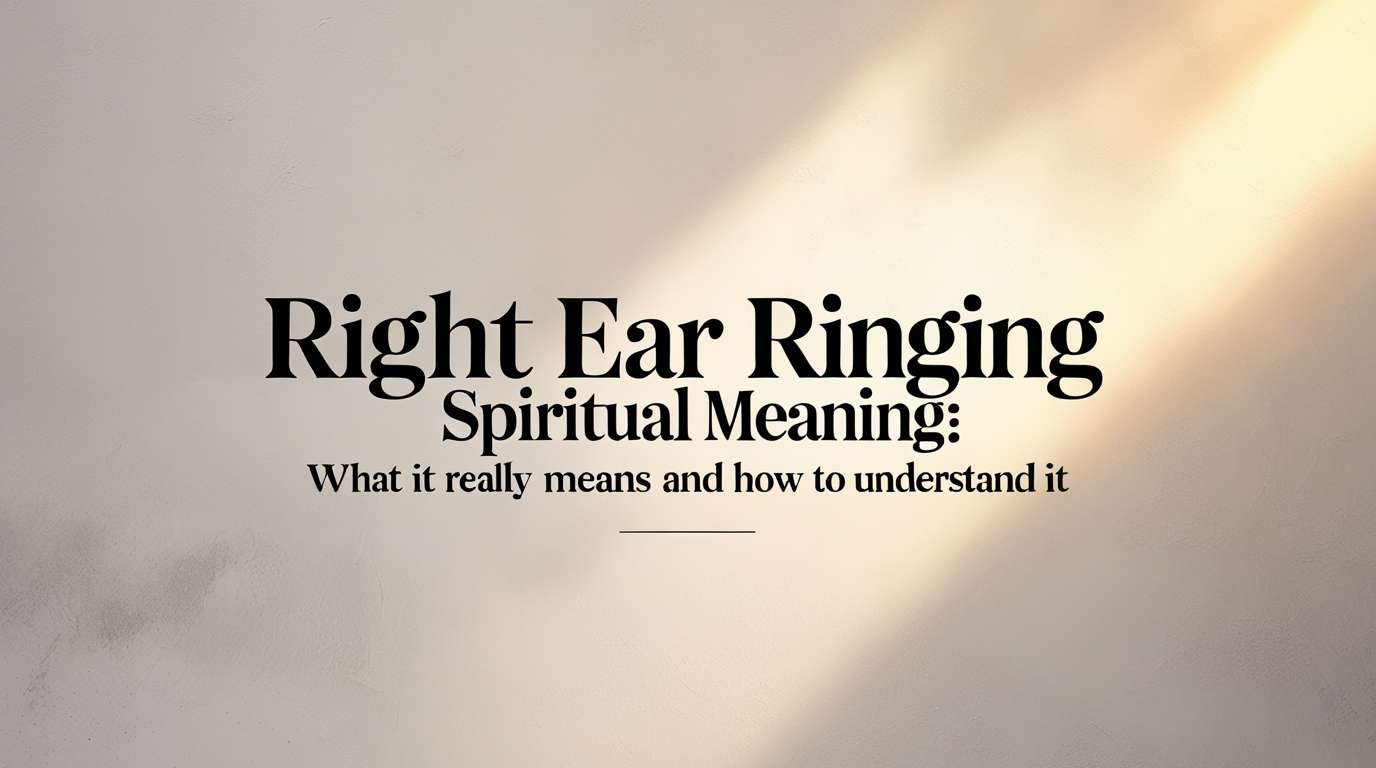
What right ear ringing spiritual meaning can feel strange. You’re sitting there, everything is quiet, and suddenly there’s a high-pitched tone in your right ear. No phone. No TV. Just you and that sound. A lot of people brush it off. Some go straight to Google. Others wonder if it means something more.
We’re not talking about medical causes here. If the ringing is constant or painful, you should talk to a doctor or ear specialist. That’s important. But many people experience quick, random ringing in one ear that comes and goes. And for a long time, different cultures and spiritual traditions have tried to explain it.
So let’s look at the spiritual side of it. What people think it means. Why the right ear is seen differently from the left. What it could be telling you. And how to respond without getting weird about it.
Table of Contents
Right ear vs. left ear
First, the big question: why do people say the right ear is different?
In many spiritual circles, the right side of the body is linked to outward energy. Action. The physical world. Messages from outside you. Some even say the right ear is connected to “higher” or “lighter” sources. Things like your guides, God, angels, or just good energy. The left ear, in contrast, is sometimes linked to more inward messages. The mind. Emotions. Even warnings or heavy energy.
This isn’t a rule written in stone. Different teachers say different things. But this pattern shows up a lot: right ear = incoming message from a higher or external source. That’s why “right ear ringing spiritual meaning” is such a common search term. People feel the sound and think, “Okay, who’s trying to tell me something?”
So if your right ear rings, many traditions would say: pay attention. Something or someone is getting your attention.

Is it always spiritual?
No. And it’s good to say that out loud.
Sometimes the body just does things. Nerves fire. Pressure changes. You moved too fast. You were around loud music. You’re stressed. That’s real.
Spiritual people make a mistake sometimes: they spiritualize everything. Every crow is a sign. Every number is an angel message. Every noise is the universe. That gets tiring. And it can make you ignore common sense.
So the best approach is simple: first rule out the obvious, then look at meaning.
Ask yourself:
- Did I just leave a loud place?
- Am I sick?
- Is this happening all day, every day?
- Is there pain or hearing loss?
If yes, talk to a doctor. That’s not spiritual. That’s health.
But if it’s random, short, clear, and kind of “out of nowhere,” and it keeps happening at certain moments, then yeah — you can look at it spiritually.
Common spiritual meanings of right ear ringing
Here are the main ideas people hold. You don’t have to believe all of them. Take what fits. Leave what doesn’t.
1. A message is coming through
This is the most common one. The idea is that your spiritual team (call it God, your higher self, your ancestors, angels, guides — use what matches your belief) is trying to get your attention. Sound is an easy way to do that. You can’t ignore it.
Why sound? Because it cuts through the mind. You might ignore thoughts. You might ignore intuition. But a ring in your ear? You notice it.
If this is the case, the ringing is not the message. It’s the alert. Like a notification. The message might come right after — as a thought, a sudden knowing, a memory popping up, a feeling to call someone, or just calm.
So next time your right ear rings, pause. Don’t panic. Just think, “Okay, what am I supposed to notice right now?” Often you’ll know.
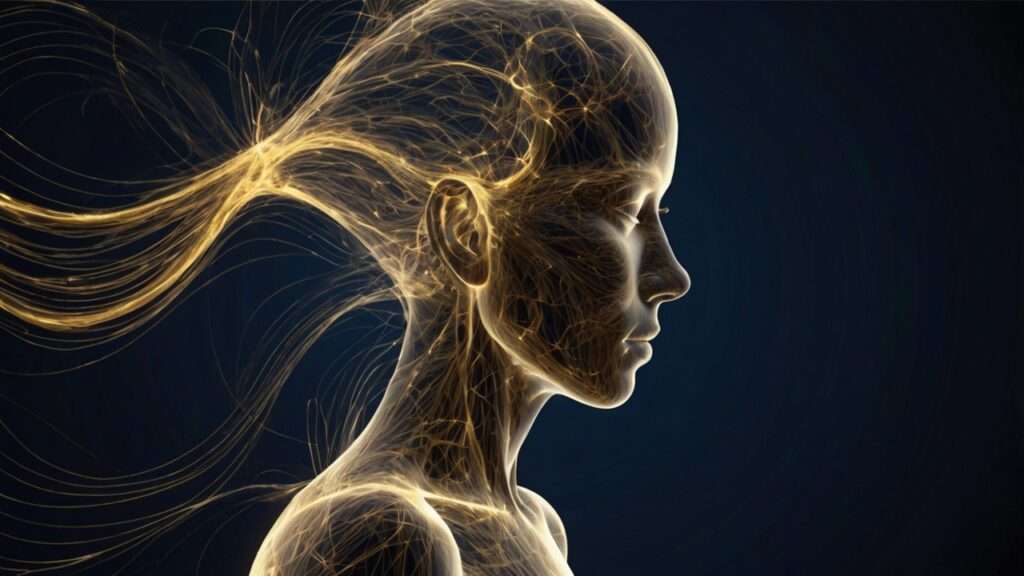
2. Confirmation or “yes”
Some people experience right ear ringing right after they think something, say something, or make a choice. In those cases, the sound can be a confirmation.
Example:
- You’re thinking of applying for a job → right ear rings.
- You’re talking about starting a project → right ear rings.
- You tell someone, “I think I should leave that relationship” → ring.
That can be read as: “Yes, that’s aligned. Keep going.”
It doesn’t mean it will be easy. It just means you’re not off track.
If you notice this pattern, start paying attention to what you were doing or saying right before the sound. That’s often the thing being confirmed.
3. You’re picking up higher frequencies
This one sounds woo-woo at first, but it’s actually simple. The spiritual view is that we’re always surrounded by energy. We move through places, people, emotions, and they all have a kind of “tone.” When your energy shifts — when you’re healing, praying more, doing shadow work, journaling, spending time in nature, meditating — you may become more sensitive.
That sensitivity can show up as sound.
Right ear ringing, in this sense, can mean: your energy is tuning up. You’re starting to perceive more. Your system is noticing things it didn’t notice before. Like when a radio gets better reception.
If this is happening often and you’re not sick, you might just be in a spiritual growth phase. That can feel weird. Just ground yourself. Eat. Go outside. Talk to real people. Don’t live in your head.
4. Someone is talking about you — but in a good way
In some folk traditions, there’s a saying: left for gossip, right for praise. Meaning: if your left ear is burning or ringing, someone is saying something negative. If your right ear is ringing, someone is speaking well of you.
Is that literally true every time? Probably not. But it’s a nice, simple meaning. And sometimes it’s spot on. You get a ring, and later someone texts, “I was just talking about you.”
So one spiritual meaning of right ear ringing can be: your name is being spoken in good energy. Someone’s recommending you, remembering you, or sending you good thoughts.
5. Guidance to pay attention to your surroundings
Sometimes the ringing is not about angels at all. Sometimes it’s about now.
You might be about to make a choice.
You might be in a room with strange energy.
You might be around people who are smiling but not honest.
You might be about to say something you shouldn’t.
So the ring comes in like: “Hey. Be alert.”
In this case, don’t overthink. Just become more present. Look around. Notice body language. Notice how you feel. Then act from awareness.
What does the pitch mean?
People love to get technical. “What does high-pitched right ear ringing mean spiritually?” “What about low?” “What about buzzing?” Truth: there’s no single universal chart that everyone agrees on. Anyone who says, “This pitch always means angels and this one always means warnings” is overselling.
But there are common patterns people report:
- High-pitched ringing in the right ear → often linked to higher beings, intuition, spiritual guidance, alignment, messages from above.
- Soft, gentle tone → often peaceful, like “you’re okay, keep going.”
- Sudden sharp tone → pay attention, something just shifted.
- Rhythmic or pulsing → something energetic around you, perhaps emotional energy from others.
Take it as personal language. Your guides, if you believe in them, will use what you recognize. So the best way to know what it means for you is to track it.
Timing matters
The meaning of right ear ringing can change based on when it happens.
- During prayer or meditation → likely spiritual contact or confirmation.
- During a hard conversation → notice what was just said.
- During work on a dream or plan → could be guidance to continue.
- When you’re overthinking → could be a reminder to get quiet.
So don’t isolate the sound. Put it in context. Ask: “What was happening right then?”

Is it dangerous?
Most of the time, no. Spiritually, right ear ringing is usually seen as neutral or positive. It’s not a curse. It’s not a threat. It’s not “something bad is coming.” In fact, if anything, it’s the opposite — it’s like someone trying to tell you, “Hey, we’re here.”
The only time it becomes a problem is if:
- You obsess over it.
- You ignore medical signs.
- You start making every choice based on random sounds.
Spiritual signs are guidance, not handcuffs. They should support your life, not run it.
How to respond when your right ear rings
Here’s a simple way to handle it without getting lost:
- Pause. Even just for 5 seconds.
- Notice your thought. What were you just thinking, saying, doing?
- Ask silently: “Is there something I should know right now?”
- Listen. See if a thought, image, scripture, feeling, or person comes to mind.
- Ground. Take a breath. Feel your body. Stay present.
That’s it. No ceremony required.
If it keeps happening, you can start a small log:
- Date/time
- What you were doing
- What you were thinking about
- Which ear
- What you felt it meant
After a few weeks, you may see patterns. Maybe it always happens when you think about a certain person. Or before making big financial choices. Or during prayer. That’s how you learn your language with the spiritual world.
Could it be a spiritual awakening sign?
Yes, it can be.
When people go through spiritual awakenings — real ones, not just social media trends — the senses wake up. They feel more. They cry more. They notice numbers. They notice nature. They feel energy in rooms. And yes, sometimes they hear ringing.
In this context, right ear ringing spiritual meaning can be: you’re opening up. Your awareness is expanding. You’re tuning in to guidance. You’re starting to hear the “thin” parts of reality.
If that’s you, remember this: you still have to live your life. Awakening doesn’t replace laundry, bills, kids, or work. Stay human.
What if the ringing feels negative?
Most people describe right ear ringing as neutral or even peaceful. But if yours feels heavy, or you get anxious right after, or you sense “this is not good,” don’t ignore that.
Here’s what to do:
- Say out loud: “Only messages for my highest good are welcome.”
- Pray, according to your faith.
- Picture light around you.
- Step away from where you are.
- Check your stress and your health.
Sometimes we’re just tired, and the body interprets everything as stress. Sometimes we’re around people whose energy doesn’t match ours. Sometimes we’re anxious, so every new sensation feels like bad news. Be honest with yourself.

Cultural and old beliefs
All over the world, people have believed for centuries that ringing ears mean something. Not just now. Not just on TikTok.
- Some old European sayings linked right ear ringing to people praising you.
- Some African traditional views connect sudden bodily sensations to spiritual contact.
- Some Native and Indigenous teachings see nature sounds or internal sounds as signs to pay attention.
- In some Eastern views, ringing can be connected to energy moving through channels.
Point is, you’re not weird for thinking it means something. Humans have always done this. We notice patterns. We assign meaning. We listen. That’s part of being human.
Balancing faith and reason
Here’s a mature way to look at right ear ringing spiritual meaning:
- Respect the body. Get checked if it’s ongoing.
- Respect the spirit. Stay open to guidance.
- Don’t be superstitious. Not every ring is a prophecy.
- Don’t be closed off. Not every ring is “just nothing.”
- Watch for fruit. If the message leads to peace, love, wisdom, and better choices, it was probably real. If it leads to fear and control, ignore it.
Spirituality should make you more grounded, not less.
A simple way to interpret it
If you want an easy filter, use this:
- Right ear ringing once, short, calm → you’re on the right track.
- Right ear ringing during a thought → pay attention to that thought.
- Right ear ringing during prayer/meditation → presence or confirmation.
- Right ear ringing around certain people → notice the energy in that relationship.
- Right ear ringing when you ignore your intuition → stop and rethink.
That’s not a scientific rule. It’s just a simple map.
Final thoughts
Right ear ringing, spiritually, is often about attention. Something wants yours.
It could be God.
It could be your higher self.
It could be your guides.
It could be your own intuition getting louder.
It could be that you’re finally quiet enough to notice.
You don’t have to make it mystical. You don’t have to tell everyone. You don’t have to post about it. You can just notice it and respond.
So the next time it happens, don’t panic. Don’t roll your eyes, either. Just pause and ask, “What are You trying to tell me right now?” Then live your life.
That’s the most spiritual part, anyway.
Falling Dream Meaning – Why You See This During Stressful Times
Spirituality
Falling Dream Meaning – Why You See This During Stressful Times

Dreams have a way of sticking with you. You wake up, heart racing, with the vivid sensation of falling from a great height. It’s unsettling, and if it happens often, you might wonder what it means. Falling dream meanings are common, especially during stressful times. They’re not just random images your brain cooks up—they often carry meaning tied to what’s happening in your life. Let’s explore why these dreams show up, what they might be telling you, and how they connect to stress.
Table of Contents
What Are Falling Dream Meaning?
You’re in a dream, maybe walking along a cliff or standing in a tall building, and suddenly, you slip. The ground disappears, and you’re plummeting. Sometimes you jerk awake just before you hit the ground. Other times, the dream fades into something else. Either way, it feels real. Your body might even twitch as you wake, like you’re trying to catch yourself.
These dreams are universal. People across cultures and ages report them. They’re not always the same—some involve falling from the sky, others from a ladder or a rooftop—but the core feeling is consistent: a loss of control, a rush of fear, and that stomach-dropping sensation. So why do they happen? And why do they seem to pop up when life feels overwhelming?

The Connection to Stress
Stress is a big trigger for falling dreams. When life feels chaotic—work deadlines pile up, relationships strain, or you’re facing big changes—your brain processes that tension while you sleep. Dreams are your mind’s way of sorting through emotions, fears, and experiences. Falling dreams often reflect a sense of losing grip on something important.
Think about it. When you’re stressed, you might feel like you’re barely holding things together. Maybe you’re worried about failing at work, losing a relationship, or not meeting expectations. That fear of “falling” in real life—failing, losing control, or not being enough—can show up in your dreams as a literal fall. It’s your brain’s way of saying, “Hey, things feel shaky right now.”
For example, imagine you’re juggling a demanding job and family responsibilities. You’re exhausted, and you’re scared of dropping the ball. At night, your mind might turn that fear into a dream where you’re tumbling off a ledge. It’s not about the ledge itself—it’s about what it represents: the fear of not keeping up.
Common Themes in Falling Dreams
Not all falling dreams are the same. They often come with different details that hint at what’s going on in your life. Here are some common variations and what they might mean:
- Falling from a height, like a building or cliff. This often points to feeling overwhelmed by a big challenge. Maybe you’re facing a major decision or a situation that feels too big to handle.
- Tripping or slipping. These dreams might reflect smaller, everyday anxieties—like worrying about making a mistake at work or saying the wrong thing in a conversation.
- Falling endlessly. If you’re falling through the sky with no end in sight, it could mean you feel stuck in a situation with no clear resolution. It’s like your brain is saying, “I don’t know how to land this.”
- Waking up before you hit the ground. This is super common. It might be your body’s way of protecting you from the worst of the fear. Your brain snaps you awake to avoid the crash.
Each version of the dream ties back to a sense of instability. The details might change, but the core feeling is the same: you’re scared of losing control.
Why Your Body Reacts
You’ve probably noticed that falling dreams come with physical sensations. Your heart races, your stomach lurches, or you might even jerk awake. This happens because your brain doesn’t fully separate dreams from reality. When you dream of falling, your body reacts as if it’s actually happening. Your nervous system kicks into gear, sending signals that mimic a real fall.
This is tied to something called a hypnic jerk—a sudden muscle twitch that happens as you’re falling asleep. Scientists think it’s a leftover reflex from our ancestors, who slept in trees and needed to catch themselves if they slipped. In a falling dream, that reflex gets triggered, making the experience feel even more vivid.

Psychological Reasons Behind Falling Dreams
Falling dreams aren’t just about stress—they can point to deeper psychological patterns. Here are a few reasons why they might show up:
- Fear of failure. If you’re worried about not measuring up—at work, in relationships, or even with your own goals—that fear can manifest as a fall. It’s like your brain is visualizing what it feels like to “crash.”
- Loss of control. Life isn’t always predictable. When things feel out of your hands—like a job loss, a health issue, or an unstable relationship—your mind might process that by putting you in a free fall.
- Insecurity. If you’re doubting yourself or feeling unsteady in some area of your life, a falling dream can reflect that. It’s your subconscious saying, “I don’t feel grounded.”
- Big transitions. Starting a new job, moving to a new place, or going through a breakup can make you feel like you’re stepping into the unknown. Falling dreams often show up during these times of change.
For example, a friend of mine started having falling dreams when she was about to get married. She wasn’t scared of the marriage itself, but the idea of such a big life change made her feel unsteady. Her dreams were her brain’s way of working through that.
Cultural and Symbolic Meanings
Falling dreams have been interpreted in different ways across cultures and throughout history. In some traditions, they’re seen as spiritual messages. For instance:
- In ancient dream interpretation. Some cultures believed falling dreams were a warning to stay grounded or avoid taking risks. They saw the fall as a sign you were straying from your path.
- In modern psychology. Experts like Carl Jung thought falling dreams symbolized a need to reconnect with your “grounded” self. Jung believed dreams were a way for your unconscious to communicate deeper truths.
- In spiritual practices. Some spiritual traditions see falling dreams as a sign of letting go—releasing old fears or attachments to move forward.
These interpretations aren’t hard rules, but they show how universal falling dreams are. No matter where you’re from, the image of falling carries weight.
What Falling Dreams Aren’t
It’s worth mentioning what falling dreams don’t mean. They’re not a literal prediction of the future—no, you’re not going to fall off a building tomorrow. They’re also not a sign of something wrong with your brain. They’re a normal part of how your mind processes emotions, especially during tough times.
Some people worry that recurring falling dreams mean they’re “broken” or that something bad is coming. That’s not true. They’re just your brain’s way of dealing with stress or uncertainty. It’s like a pressure valve, letting out some of the tension you’re carrying.

How to Deal with Falling Dreams
If falling dreams are keeping you up or making you anxious, there are ways to manage them. Here are some practical steps:
- Address your stress. Since stress is a big trigger, look at what’s overwhelming you. Can you break tasks into smaller pieces? Can you talk to someone about what’s on your mind? Even small steps, like taking a walk or journaling, can help.
- Create a bedtime routine. A calm mind is less likely to churn out intense dreams. Try winding down with something relaxing, like reading or listening to soft music. Avoid screens an hour before bed—they can keep your brain wired.
- Reflect on the dream. When you wake up, think about what the fall might represent. Are you scared of failing at something? Feeling out of control? Writing down your thoughts can help you spot patterns.
- Practice grounding techniques. If you’re feeling unsteady in life, try mindfulness or meditation. These can help you feel more centered, which might reduce falling dreams over time.
- Talk to someone. If the dreams are frequent and upsetting, a therapist or counselor can help you dig into what’s behind them. Sometimes, talking it out makes a big difference.
For example, I had a period where falling dreams kept happening during a tough work project. I started journaling about what was stressing me out, and over time, the dreams faded. It wasn’t instant, but it helped.
When to Seek Help
Falling dreams are usually harmless, but if they’re happening every night or leaving you exhausted, it might be worth looking deeper. They could be tied to anxiety, depression, or even sleep issues like insomnia. If you’re also feeling overwhelmed during the day, or if the dreams come with other intense nightmares, talking to a doctor or therapist can help.
They might suggest things like cognitive behavioral therapy (CBT), which can help you manage stress and change how your brain processes fear. In rare cases, frequent vivid dreams could point to a sleep disorder, so a sleep study might be recommended.
Can You Prevent Falling Dreams?
You can’t always stop falling dreams, but you can lower the chances of having them. Here’s how:
- Get enough sleep. When you’re sleep-deprived, your brain is more likely to churn out intense dreams. Aim for 7-8 hours a night.
- Manage stress during the day. Exercise, talk to a friend, or do something you enjoy. The less stress you carry to bed, the calmer your dreams might be.
- Avoid heavy meals or alcohol before bed. These can mess with your sleep cycle and make dreams more vivid.
- Create a safe sleep environment. A comfortable bed, dark room, and cool temperature can help you sleep more soundly, which might reduce intense dreams.
What If You Enjoy Falling Dreams?
Not everyone hates falling dreams. Some people find them thrilling, like a rollercoaster ride. If that’s you, there’s no need to “fix” them. They might just be your brain’s way of processing excitement or a desire for adventure. In that case, enjoy the ride! But if they start feeling unsettling or too frequent, the tips above can still help.

A Personal Take
I’ve had falling dreams during some of the most stressful times in my life—moving to a new city, starting a new job, or navigating a breakup. Each time, the dreams felt like a signal that I was carrying too much worry. They weren’t fun, but they pushed me to slow down and figure out what was really bothering me. In a way, they were like a wake-up call—not to scare me, but to get me to pay attention.
Wrapping Up
Falling dreams are more than just random images. They’re your brain’s way of processing stress, fear, or uncertainty. Whether you’re falling from a skyscraper or tripping over a curb, the message is often the same: something in your life feels unsteady. By paying attention to what’s going on when you’re awake, you can start to make sense of these dreams and maybe even reduce them.
Next time you wake up from a falling dream, don’t brush it off. Think about what’s been weighing on you. Are you scared of failing? Feeling out of control? Write it down, talk it out, or take a small step to ease the stress. Your dreams are trying to tell you something—listen.
Spiritual Awakening Signs: How to Know You’re Experiencing One
-

 Spirituality1 year ago
Spirituality1 year agoWhat does a three-legged dog symbolize spiritually?
-
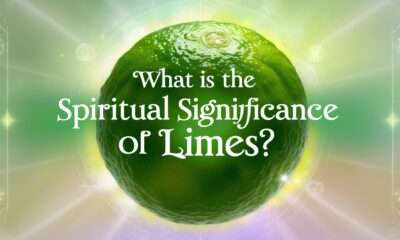
 Spirituality1 year ago
Spirituality1 year agoWhat is the spiritual significance of limes?
-

 Spirituality1 year ago
Spirituality1 year agoWhat is the Spiritual Significance of the Sun and Moon?
-

 Spirituality1 year ago
Spirituality1 year agoWhat Does a Paper Cut Mean Spiritually?
-
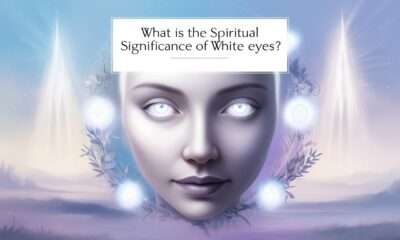
 Spirituality1 year ago
Spirituality1 year agoWhat is the spiritual significance of white eyes?
-
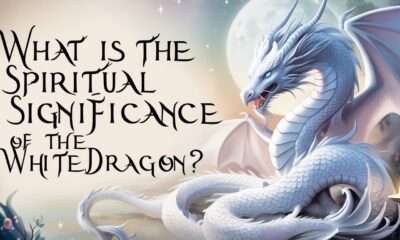
 Symbolism1 year ago
Symbolism1 year agoWhat is the spiritual significance of the white dragon?
-

 Dream Meanings1 year ago
Dream Meanings1 year agoHave You Ever Wondered About the Spiritual Significance of Finding a Lost Item?
-
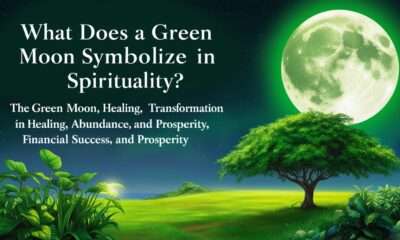
 Symbolism1 year ago
Symbolism1 year agoWhat Does a Green Moon Symbolize in Spirituality?








